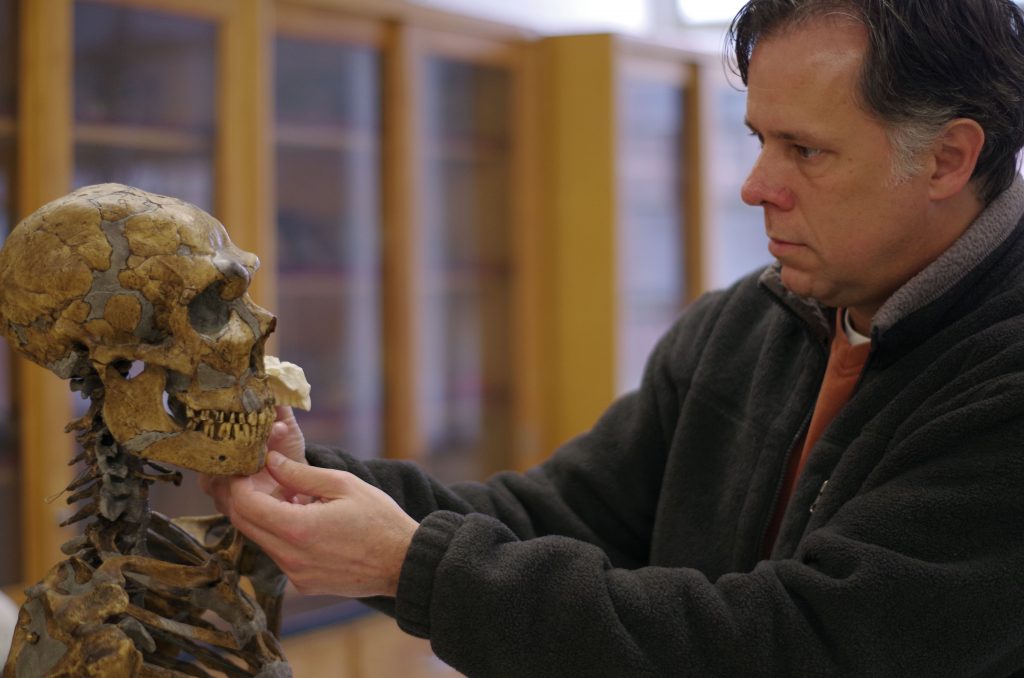
In 2002, paleoanthropologists discovered a fossil of a human jawbone in Israel. Now, after years of research and testing, researchers have determined that the jawbone offers evidence that ancestors of the modern human species traveled out of Africa more than 50,000 years earlier than previously believed.
This isn’t the first time Mount Carmel, a famous and historically important mountain range in Israel, has yielded important archaeological finds. In 2002, a team led by Israel Hershkovitz, a paleoanthropologist at Tel Aviv University, was excavating the Misliya Cave when it found an upper jawbone. Researchers have spent the past 16 years studying and testing this fossil, only recently confirming their theory that the jawbone belonged to a Homo sapien — the scientific name for modern humans — somewhere between 177,000 and 194,000 years ago.
Rolf Quam, an associate professor of anthropology at Binghamton University, contributed to the research on the jawbone and was first approached by Hershkovitz to collaborate on the study in 2008 while working at the Atapuerca excavation site in northern Spain.
“Several of us [anthropologists] were studying the fossil ― taking pictures, measurements and photographs,” Quam said. “We collected a bunch of data on it and then wrote up a comparison of it, where we compared all the measurements we had to other fossils we had to see which species it represented.”
Quam is one of 35 authors of “The Earliest Modern Humans Outside Africa,” a paper that was published in Science magazine on Jan. 26. The paper focused on the jawbone and its potential impact on the anthropological understanding of the original dispersal of modern humans.
The discovery has been documented by multiple outlets, including The New York Times. Quam said the widespread excitement was surprising.
“All along, you kind of know that this could possibly be a ‘big one,’” Quam said. “It’s been really everywhere, flooding the airwaves.”
Anthropologists have long known that Neanderthals occupied regions within the Middle East, one pathway for early humans who left Africa. The discovered fossil suggests modern humans leaving Africa could have interacted with Neanderthals and other premodern humans for a much longer period of time than previously believed. Interactions between species could have included cultural exchanges of objects and stone tools, as well as things that can’t be preserved by fossil records, like biological exchanges that led to hybridization between species.
According to Quam, another interesting aspect of the study is that it confirms anthropologists’ theories that humans were moving out of Africa much earlier than anthropologists thought. Before this finding, it was commonly thought that modern humans left Africa around 120,000 years ago at the earliest, but the fossil suggests there was movement anywhere between 175,000 and 200,000 years ago.
“It means our species has been a pancontinental, or cosmopolitan, species for longer than we thought,” Quam said. “[It means] that they weren’t restricted to one area.”
Quam said it’s possible to gain further confirmation from the fossil’s DNA, but that extracting the genetic information would be difficult because of the fossil’s age.
Anthropologists might choose to further excavate the area in which the fossil was found to search for more early modern human fossils.
Quam will be holding an evolutionary studies seminar, titled “New Perspectives on the Origin and Evolution of Homo sapiens,” where he will discuss his research and the fossil’s significance. It will be held on Monday, Feb. 5 at 5:15 p.m. in Science I, Room 149.


